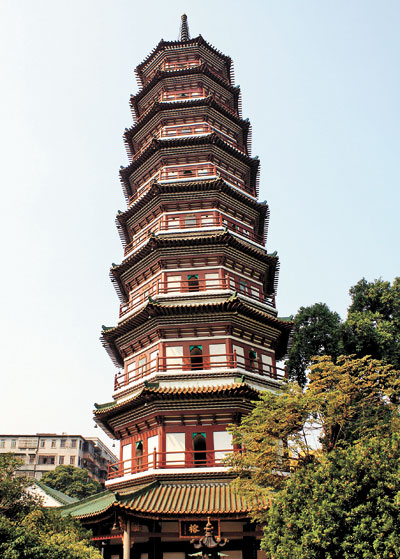
James Baquet jamesbaquet@gmail.com THE traditionally styled building known as a “pagoda” dates back to Buddhism’s early days in India, where remains of the historical Buddha and other significant figures were placed in earthen mounds with a series of stylized concentric umbrellas on top, all on a single pole. The umbrella was a symbol of royalty. Over time, the umbrella element got larger, as the mound shrunk, until at last we have the structures most commonly seen today. Some, like the Flowery Pagoda at Liurong Temple in Guangzhou, retain exaggerated roof eaves that emulate the appearance of the umbrellas. This association between the pagoda and the Buddha’s body has remained strong for thousands of years. At the center of many pagodas is a vessel, a box, or even an underground chamber, often called a palace, holding one of the numerous presumptive relics of the Buddha’s body. In the main hall of many temples, one finds three Buddhas: Amitabha, Shakyamuni, and Bhaisajyaguru. This last is commonly called The Medicine Buddha in English (Yaoshi Fo in Chinese). People often appeal to him for healing of the body; he can easily be distinguished by the pagoda he holds in his hand. Bhaisajyaguru Buddha is not to be confused with Vaishravana, one of the Four Heavenly Kings in the first hall of most temples, who may also hold a pagoda. This symbolizes his control of the “divine treasure house,” a popularization of the idea of pagodas. The remains of Shakyamuni are “precious,” and the main hall in some temples is called Baodian — which could be translated Treasure Hall. | 
